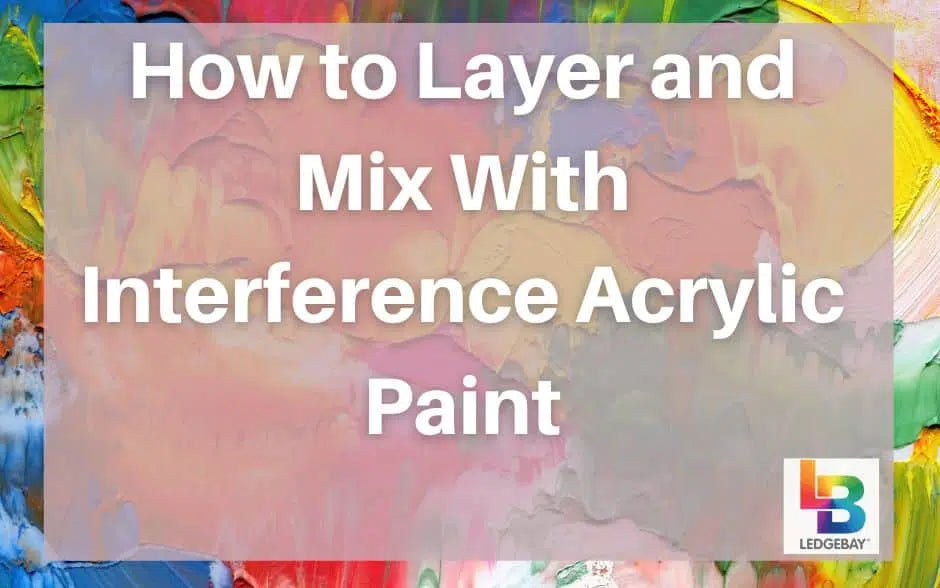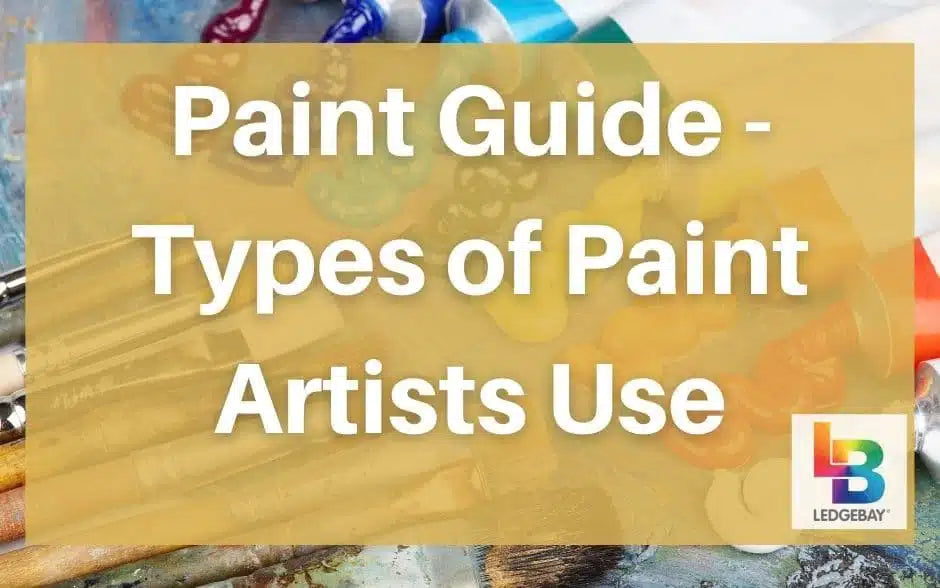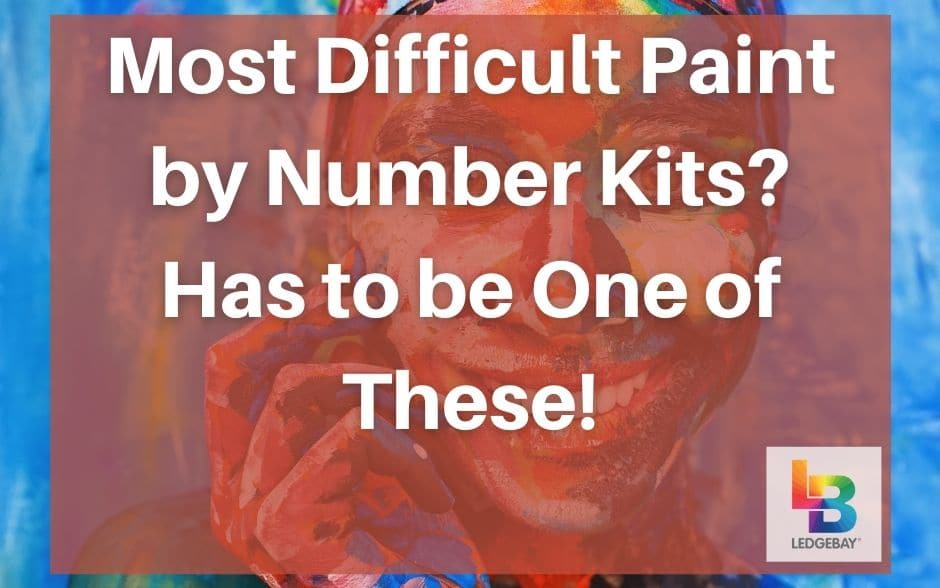You've probably heard of passive vs active colors, but here's what it really means for you as a beginner painter. So, keep reading to find out more!
The first color wheel diagram was developed by Sir Isaac Newton, in short, in an attempt to understand why feeding white light through a prism creates the rainbow colors: red, orange, yellow, green, blue, indigo, and violet.
After multiple experiments, he came to the conclusion that white light is, in fact, a mixture of all the individual colors of the rainbow. After that, he noticed that the colors red and violet looked quite similar. Next, he tied both ends of the spectrum, subsequently, creating thecolor wheel .
Incolor theory , for instance, the color wheel is a tool that helps us see the patterns between individual colors so we can use them effectively.
Firstly, the color wheel starts with the three primary colors, then secondary and tertiary colors. Therefore, these differentlevels of color can be divided into ranges: passive and active.
For instance, on the cool side of the color wheel, passive colors are blue, green, and purple. These hues are low-saturated, therefore giving off a feeling of tranquility.
In addition, passive colors are also known asreceding orretreating colors . When our eyes perceive the wavelengths of passive colors, for instance, they appear further and create the illusion of spaciousness.
In painting, using blues, greens, and purples gives a sense of distance to the objects. This could be seen inpaintings with mountains and landscapes , which are most likely going to be in a hue of blue or green.

Blue is an unusual color because although it has a strong hold on the eye, similar to that of an active color, it’s one of the passive colors. It’s a hue that’s contradictory in its purest form, evoking both a sense of excitement and tranquility.
When we useblue to paint , we create a surface that attracts the eyes, not because it’s advancing to us, but because as it recedes, our eyes follow it.
Blue is cold yet serene, a characteristic that makes it versatile in painting. It can be used to give objects a sense of emptiness and melancholy or of infinite spatial vastness.
[amazon box="B00221TTDE"]
When the primarycolors blue and yellow are mixed in perfect quantities, the result is a soothing green. Because it’s the hue of nature, green evokes feelings of calm and relaxation. It’s also described as jolly and full of life.
Greencreates a sense of abundance in paintings . Landscapes appear boundless, and other colors blend in and out of the green harmoniously just like in nature. For the artist, green encompasses the emotions one may feel when he’s surrounded by nature.
Nevertheless, a darker green can elicit a feeling of envy, and a yellow-ish green is reminiscent of sickness and disharmony.

Purple is a secondary color made from mixing red and blue together. It rarely occurs in nature, so in ancient times, it was considered a symbol of wealth and royalty. It’s also associated with creativity and mystery.
Lighter shades of purple are a visual representation of spring and light-hearted, romantic feelings. However, darker shades create an air of mystery and sensuality.
In paintings, purple plunges into the depths of darker backgrounds, but it projects forward when it’s set against a white background.
[amazon box="B07BG31HLP"]
On the other side of the spectrum, there are the warm, saturated active colors. They include yellow, orange, and red. These colors are characterized as energetic and flamboyant.
All active colors are consideredadvancing colors , meaning that they draw in space to your eyes. This can inspire either a feeling of coziness and intimacy or a heightened emotion.
A painting that effectively combines active colors can portray exuberance, radiance, and warmth. However, overuse of activecolors can cause the painting to clash.

Yellow is a color of brightness, serenity, light, and excitement. It’s associated with childhood and the sun, evoking feelings of happiness and optimism.
However, yellow can be a color of contradiction. This brightness can be intense, creating a harsh appearance.
Usingyellow attracts light to the painting , giving it a brighter and vibrant appearance. Even the smallest stroke can grab attention. Nevertheless, when it’s overused, it becomes abrasive and can cause visual fatigue.
Mixing yellow with blue or green can result in unpleasant shades that are associated with cowardice and sickness.
So, right between red and yellow on the color wheel, orange is a dynamic and bold color that evokes warmth and excitement. Different shades can be associated with different seasons, like the autumn leaves and the summerymarigold flowers .
In paintings, orange can be used to direct attention as desired. Moreover, its hues contrast beautifully with blue and purple that many well-renowned artists, like VincentVan Gogh , incorporated this contrast into their paintings.
Orange can be overpowering and intrusive if used overused.
Red is a polarizing color because it holds both extremely positive and negative meanings. Throughout history and culture, it’s been linked to the Devil as well as the Cupid, representing both fire and passion.
Moreover, it has the longest wavelength, which makes it the most advancing color. As a result, a drop of red can still stand out among othercolors in paintings .
When red is overused in a painting, it can overpower other colors and cause stress and agitation.
[amazon box="B00889ZC6M"]
InTheory of Colors , for example, German poet and artist Johann Wolfgang von Goethe investigates how different colors have psychological impacts on mood and emotion.
Although his ideas are based on his intuition, this doesn’t take away from the fact that they have some truth to them.
Colors can have physical and emotional effects on us, as stated inPsychological Color Effects , a study conducted by the Department of Interior Architecture and Environmental Design at Bilkent University.
These emotional and physical reactions that we experience are caused by the psychological link that we have to these colors.
Until the 18th century, the term warm was associated with liveliness and energy. Because they’re linked in our minds with the sun, fire, and blood, active colors are connected to intense emotions.
For example, the active color red can evoke excitement or anger, possibly causing increased heart rate or higher respiratory rate. It’s the color that evokes the most emotional responses, both negative and positive.
On the other hand, the term cool denoted a lack of desire and vigor. Passive colors, therefore, are linked to cold and lethargy. However, they’re not just subdued and dull. They’re also associated with nature, which elicits a sense of peace and relaxation.
Take the color blue, for example. The sky and theocean are associated with passive colors. Their vastness can be felt through the color blue, therefore providing a calming effect and mental clarity. Nevertheless, blue has been associated with feelings of sadness and emptiness.
In conclusion, the color wheel allows us to observe the relationships between individual colors. Moreover, it gives us the opportunity to test these relationships out.
Even if these relationships come off as daunting, looking at references can help you progress. Go to museums and study thepaintings decorating the walls, for example. To accelerate your skills, for instance, you can buy books that include thepaintings you like and artists you admire, and paint from them.
So, as you actively engage with the different color combinations, you can learn more in-depth and notice patterns that aren’t easily perceptible by just looking.
CLICK HERE to shop our complete selection of acrylic paint by numbers kits!
The first color wheel diagram was developed by Sir Isaac Newton, in short, in an attempt to understand why feeding white light through a prism creates the rainbow colors: red, orange, yellow, green, blue, indigo, and violet.
After multiple experiments, he came to the conclusion that white light is, in fact, a mixture of all the individual colors of the rainbow. After that, he noticed that the colors red and violet looked quite similar. Next, he tied both ends of the spectrum, subsequently, creating thecolor wheel .
Incolor theory , for instance, the color wheel is a tool that helps us see the patterns between individual colors so we can use them effectively.
Firstly, the color wheel starts with the three primary colors, then secondary and tertiary colors. Therefore, these differentlevels of color can be divided into ranges: passive and active.
What Are Passive vs Active Colors?
The color wheel is made from 12 colors that are arranged in achromatic sequence , divided into ranges that are either passive or active.Passive vs Active Colors - Passive Colors
For instance, on the cool side of the color wheel, passive colors are blue, green, and purple. These hues are low-saturated, therefore giving off a feeling of tranquility.
In addition, passive colors are also known asreceding orretreating colors . When our eyes perceive the wavelengths of passive colors, for instance, they appear further and create the illusion of spaciousness.
In painting, using blues, greens, and purples gives a sense of distance to the objects. This could be seen inpaintings with mountains and landscapes , which are most likely going to be in a hue of blue or green.
Blue

Blue is an unusual color because although it has a strong hold on the eye, similar to that of an active color, it’s one of the passive colors. It’s a hue that’s contradictory in its purest form, evoking both a sense of excitement and tranquility.
When we useblue to paint , we create a surface that attracts the eyes, not because it’s advancing to us, but because as it recedes, our eyes follow it.
Blue is cold yet serene, a characteristic that makes it versatile in painting. It can be used to give objects a sense of emptiness and melancholy or of infinite spatial vastness.
[amazon box="B00221TTDE"]
Green
When the primarycolors blue and yellow are mixed in perfect quantities, the result is a soothing green. Because it’s the hue of nature, green evokes feelings of calm and relaxation. It’s also described as jolly and full of life.
Greencreates a sense of abundance in paintings . Landscapes appear boundless, and other colors blend in and out of the green harmoniously just like in nature. For the artist, green encompasses the emotions one may feel when he’s surrounded by nature.
Nevertheless, a darker green can elicit a feeling of envy, and a yellow-ish green is reminiscent of sickness and disharmony.
Purple

Purple is a secondary color made from mixing red and blue together. It rarely occurs in nature, so in ancient times, it was considered a symbol of wealth and royalty. It’s also associated with creativity and mystery.
Lighter shades of purple are a visual representation of spring and light-hearted, romantic feelings. However, darker shades create an air of mystery and sensuality.
In paintings, purple plunges into the depths of darker backgrounds, but it projects forward when it’s set against a white background.
[amazon box="B07BG31HLP"]
Passive vs Active Colors - Active Colors
On the other side of the spectrum, there are the warm, saturated active colors. They include yellow, orange, and red. These colors are characterized as energetic and flamboyant.
All active colors are consideredadvancing colors , meaning that they draw in space to your eyes. This can inspire either a feeling of coziness and intimacy or a heightened emotion.
A painting that effectively combines active colors can portray exuberance, radiance, and warmth. However, overuse of activecolors can cause the painting to clash.

Yellow
Yellow is a color of brightness, serenity, light, and excitement. It’s associated with childhood and the sun, evoking feelings of happiness and optimism.
However, yellow can be a color of contradiction. This brightness can be intense, creating a harsh appearance.
Usingyellow attracts light to the painting , giving it a brighter and vibrant appearance. Even the smallest stroke can grab attention. Nevertheless, when it’s overused, it becomes abrasive and can cause visual fatigue.
Mixing yellow with blue or green can result in unpleasant shades that are associated with cowardice and sickness.
Orange
So, right between red and yellow on the color wheel, orange is a dynamic and bold color that evokes warmth and excitement. Different shades can be associated with different seasons, like the autumn leaves and the summerymarigold flowers .
In paintings, orange can be used to direct attention as desired. Moreover, its hues contrast beautifully with blue and purple that many well-renowned artists, like VincentVan Gogh , incorporated this contrast into their paintings.
Orange can be overpowering and intrusive if used overused.
Red
Red is a polarizing color because it holds both extremely positive and negative meanings. Throughout history and culture, it’s been linked to the Devil as well as the Cupid, representing both fire and passion.
Moreover, it has the longest wavelength, which makes it the most advancing color. As a result, a drop of red can still stand out among othercolors in paintings .
When red is overused in a painting, it can overpower other colors and cause stress and agitation.
[amazon box="B00889ZC6M"]
Passive vs Active Colors
InTheory of Colors , for example, German poet and artist Johann Wolfgang von Goethe investigates how different colors have psychological impacts on mood and emotion.
Although his ideas are based on his intuition, this doesn’t take away from the fact that they have some truth to them.
Emotional and Physical Effect
Colors can have physical and emotional effects on us, as stated inPsychological Color Effects , a study conducted by the Department of Interior Architecture and Environmental Design at Bilkent University.
These emotional and physical reactions that we experience are caused by the psychological link that we have to these colors.
Until the 18th century, the term warm was associated with liveliness and energy. Because they’re linked in our minds with the sun, fire, and blood, active colors are connected to intense emotions.
For example, the active color red can evoke excitement or anger, possibly causing increased heart rate or higher respiratory rate. It’s the color that evokes the most emotional responses, both negative and positive.
On the other hand, the term cool denoted a lack of desire and vigor. Passive colors, therefore, are linked to cold and lethargy. However, they’re not just subdued and dull. They’re also associated with nature, which elicits a sense of peace and relaxation.
Take the color blue, for example. The sky and theocean are associated with passive colors. Their vastness can be felt through the color blue, therefore providing a calming effect and mental clarity. Nevertheless, blue has been associated with feelings of sadness and emptiness.
Passive vs Active Colors - Conclusion
In conclusion, the color wheel allows us to observe the relationships between individual colors. Moreover, it gives us the opportunity to test these relationships out.
Even if these relationships come off as daunting, looking at references can help you progress. Go to museums and study thepaintings decorating the walls, for example. To accelerate your skills, for instance, you can buy books that include thepaintings you like and artists you admire, and paint from them.
So, as you actively engage with the different color combinations, you can learn more in-depth and notice patterns that aren’t easily perceptible by just looking.
CLICK HERE to shop our complete selection of acrylic paint by numbers kits!











